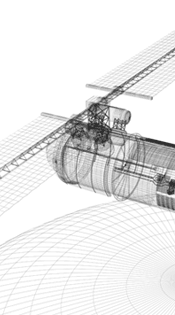|
The satellite sector supports a wide
range of applications including broadcasting, navigation,
maritime communications, intercontinental telecommunication links,
environmental monitoring
and corporate networks. Some communications services
have come under increasing competitive pressure as high quality
and high capacity terrestrial networks have expanded their coverage
to areas previously accessible only via satellite. Other services
remain possible only via satellite and, at the same time, new opportunities
are to be found in navigation and environmental monitoring. Continuing pressure on spectrum
from outside the satellite sector means that satellite spectrum may have to be shared with
a broader range of other services, with potentially more complex sharing techniques.
Quotient’s expertise covers technologies, services and markets
gained through:
- Analysis work targeting the potential for Wi-Fi extension
bands at 5 GHz and the likely interference issues with incumbent users such as the Earth
Exploration Satellite Service and the Radio Navigation service. The environmental satellite
of interest was a TOPS SAR type (Terrain Observation by Progressive Scans Synthetic Aperture Radar).
Co-existence analysis work involved both characterisation
of the foreshortened satellite beam shape and the area swept over the Earth per radar burst,
plus the integrated signal power from Wi-Fi
installations indoors and outdoors as seen at the satellite. These results were presented
to ITU JTG 4-5-6-7 and ETSI CPG-PTD study groups in preparation for WRC-15.
- For Ofcom, evaluating methods of locating wireless devices where GPS
satellite coverage was not available or insufficiently accurate. The objective was to identify how wireless devices could
determine their location in places, such as indoors and urban canyons, where GPS is unable to operate.
It was necessary to investigate conditions where GPS accuracy could be compromised, such as via multipath
and to incorporate the evolution in GNSS expected from later systems such as Galileo and GLONASS.
Results were presented to telecommunications standards groups looking at geolocation for wireless devices and at location
industry stakeholder workshops.
|


